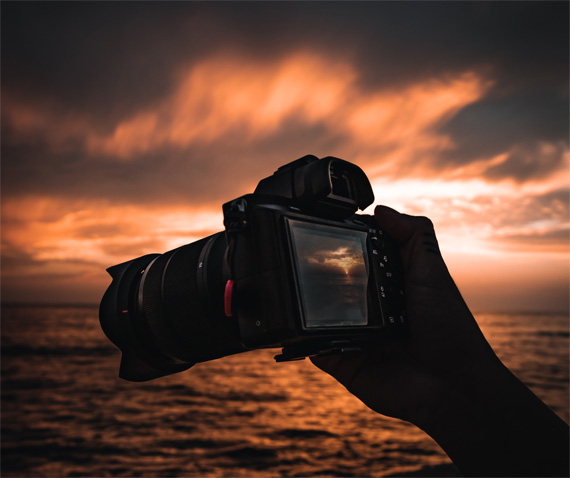Now generally I recommend a tripod for landscape photography, however, I do shoot a fair bit of hand-held landscapes too and trust me, I have had more than my share of blurry photos in my 15 odd years of photography.
Is there anything worse than a Blurry Masterpiece?
In my opinion, there is nothing worse than zooming into the best shot of the day, the miracle shot that captured the moment perfectly, only to discover it’s blurry.
Ok, so how do we shoot hand-held in tough conditions and make sure our photos have a good chance of being sharp?

Photo by Daniel Lincoln; ISO 100, f/4.5, 1/100s, 16mm.
Shutter speed is critical when shooting without a tripod. We need to shoot fast enough so that any camera shake is not visible in our final photo.
But what shutter speed is fast enough to avoid camera shake?
Interestingly, it varies depending on the focal length of the lens you are shooting with.
Wide-angle lenses are much easier to get sharp hand-held photos than telephoto, as you will see below
The rule of thumb that I use is:
2 times the focal length you are shooting is a good minimum shutter speed as a guide. Of course, the faster – the better chance of a good result.
You may find that with modern stabilized cameras and lenses that you can go even lower, however, I feel that 2x the focal length is a good minimum to start at.
Now you might be thinking, “what on earth is he talking about”.
Hopefully, this clears it up:
- 20mm lens: 2 x 20 = 1/40th of a second as your minimum shutter speed for a 20mm lens.
- 50mm lens: 2 x 50 = 1/100th of a second as your minimum shutter speed for a 50mm lens.
- 100mm lens: 2 x 100 = 1/200th of a second as your minimum shutter speed for a 100mm lens
- 400mm lens: 2 x 400 = 1/800th of a second as your minimum shutter speed for a 400mm lens.
Of course, the faster the better, if you can.
This won’t guarantee sharp photos every time but it will get you on the right track as far as shutter speed is concerned.
Below are further tips for the perfect hand-held Landscape photo.
• Raise your ISO to achieve at least the minimum shutter speed above.
• Brace yourself against a solid object to reduce camera shake.
• Choose a lens or camera with Image Stabilization.
• Set your camera to multiple shot mode and fire 3-4 consecutive shots. Generally, camera shake is at its highest on the first photo as we press the shutter and will settle down in the 2nd-3rd-4th shots of the sequence.
Like This Article?
Don't Miss The Next One!
Join over 100,000 photographers of all experience levels who receive our free photography tips and articles to stay current:






It should be mentioned (and rarely is in articles like this) that when considering the focal length of the lens on an APS-C camera or even a compact camera that the crop factor must be applied to get the full-frame equivalent.
Most beginners and amateurs will probably not be using full-frame cameras and I assume this article is aimed at them.